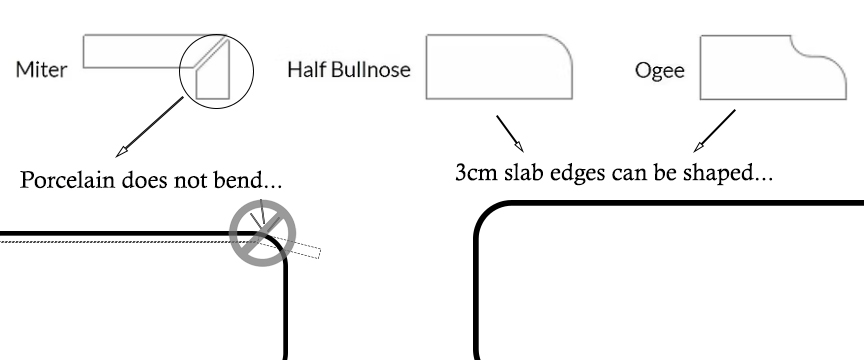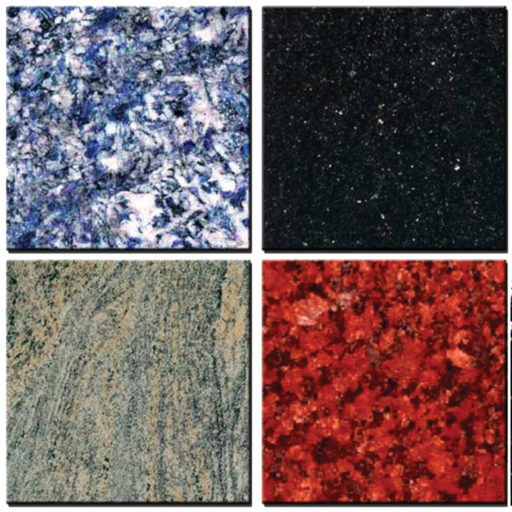THE REAL DIFFERENCES IN THESE MAN-MADE MATERIALS.
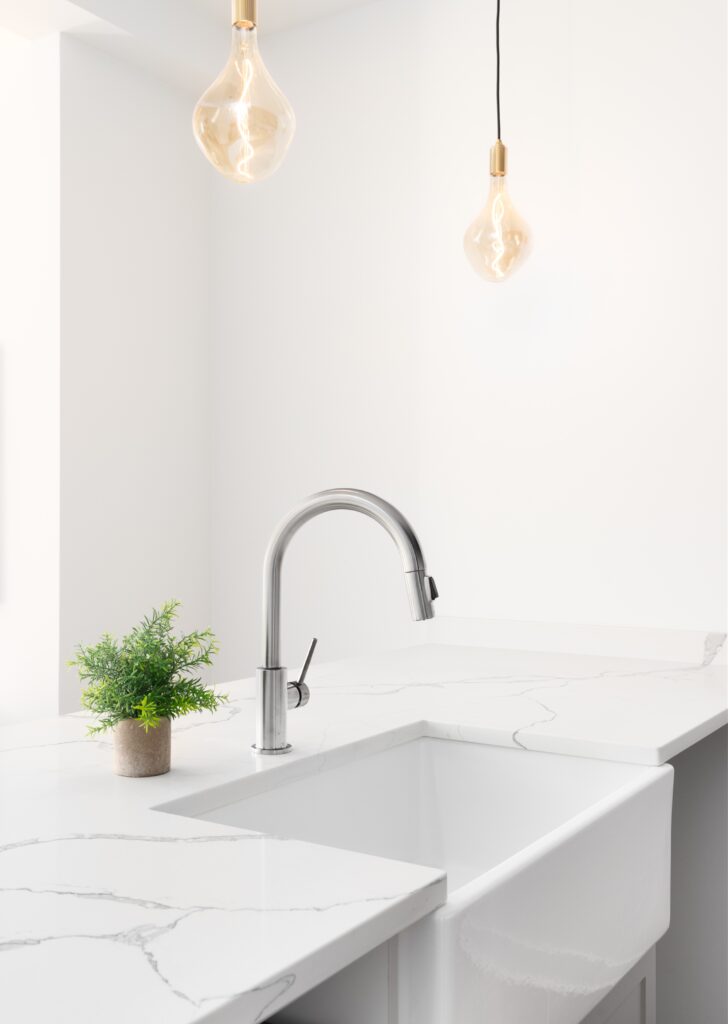
Quartz and porcelain are both popular choices for man-made countertops, but they have distinct differences:
- Composition:
- Quartz: An engineered stone composed primarily of ground natural quartz (90-95%) mixed with resins, pigments, and binders. The resins and quartz dust are mixed and formed into slabs. The technology in the last decade has developed to replicate natural-looking veining, especially in the various marble colors. Once formed, the slabs are cured using heat and high pressure. The result is full-thickness slabs (3 centimeters or 1 3/16″) that are very resistant to breakage.
- Porcelain: A ceramic material made from refined clays fired at high temperatures, often with a glazed surface. Recent advances in porcelain technology have factories producing large format slabs (62” X 126” X 8mm to 12mm thick). Porcelain is made from various mixtures of clay, feldspar, quartz, and other mineral pigments. It is molded into slabs and fired in an oven at very high temperatures (up to 2,400°F). Textures and veining can be created during the glazing process. Veining often is applied using specialized inkjet printers at very high resolution. The slabs with the new glazing (texture and/or patterns) are once again fired at around 2,400°F.
- Durability, Heat Resistance:
- Quartz: Extremely durable, resistant to scratches, chips, and stains. It is non-porous and can be cleaned with a damp cloth and mild soaps. You should avoid direct contact with heat from cookware. Even if markings don’t appear at first, repeated exposure to heat in the same areas can begin to yellow the resins over time.
- Porcelain is highly durable and resistant to scratches and stains, but due to the thinness of the slabs, it can be more susceptible to chipping and cracking, especially during installation. Due to its extreme hardness, edges are limited. This material is often mitered to create an edge. There can be no radiused edges if you want the pattern to match. Using other materials for a complementary edge could allow a radius on porcelain countertops.
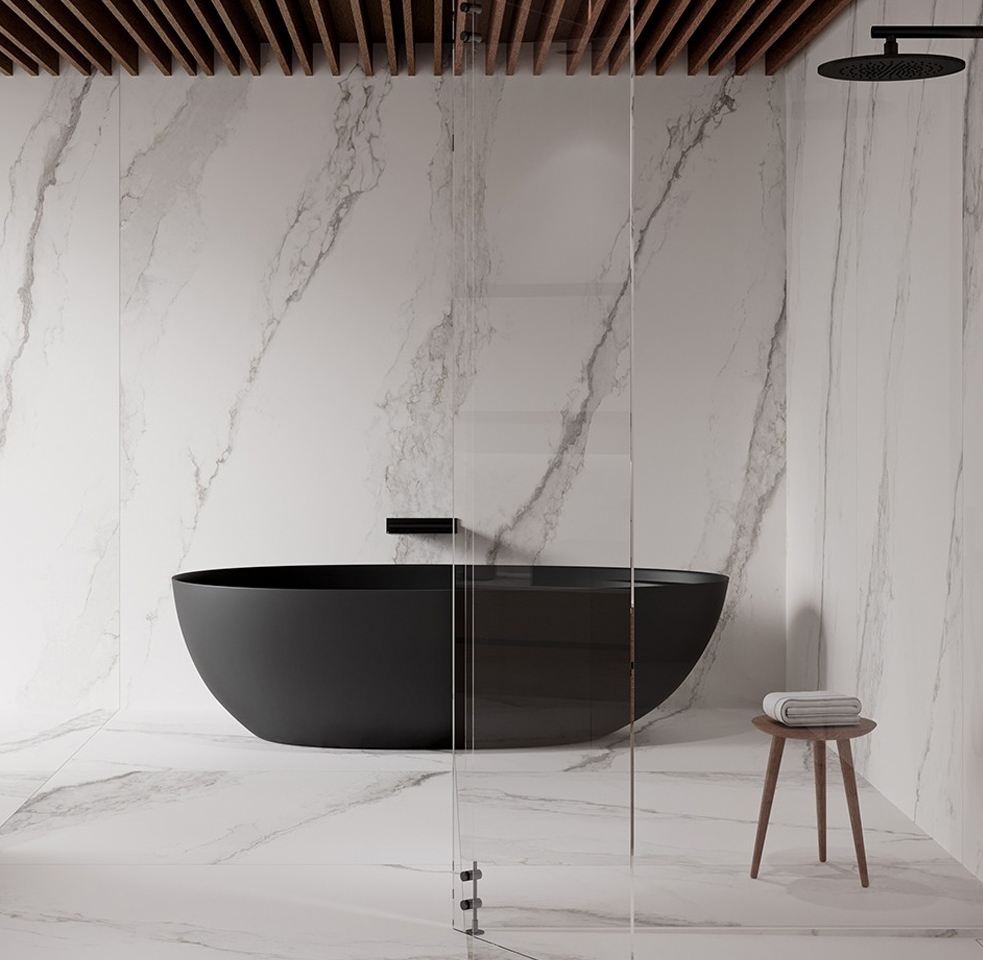
- Appearance:
- Quartz: Available in a wide variety of colors, patterns, and textures, often mimicking natural stone.
- Porcelain: Can convincingly pull off the look of natural stone, marble, and other materials with high-fidelity printing. There are also a wide variety of texures available as well.
- Maintenance:
- Quartz: Low maintenance, typically requires only mild soap and water for cleaning.
- Porcelain: Easy to clean with mild soap and water.
- Cost:
- Quartz: Generally more affordable than porcelain.
- Porcelain: Can be more expensive due to specialized manufacturing and the high level of craftsmanship often involved in installation.
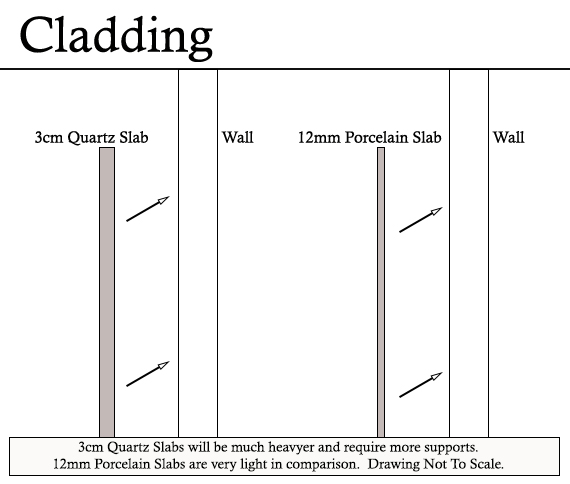
Overall:
Quartz offers excellent durability and a wide range of aesthetic options and is relatively more affordable, depending on your color selection. Porcelain excels in heat resistance and can achieve a more realistic natural stone look, especially when used for cladding (such as shower walls). However, it requires more careful handling and can be more costly. The best choice for you will depend on your budget and aesthetic preferences.
The primary functional factors that may affect your decision lie in the type of project you have in mind. If you are looking at cladding for a wall or in a bath or shower, the cuts and mounting of porcelain are much lighter. If you are looking at countertops, either are excellent options in terms of beauty and functionality. However, the fabrication requirements are very different.
Quartz comes in 3cm thickness, allowing a substantial edge to shape as you like. Radiused corners are easy to create. Porcelain is comparatively thin, and the photo glazing does not run through the slab. So, the standard procedure is to miter the edges to create the illusion of thickness. As long as your counters have straight edges, they can look very pleasing. If your design includes any radius, the whole mitered edge option essentially goes away. Also, 12mm Porcelain requires a plywood subdeck for extra support while 3cm Quartz can support its own weight. As indicated earlier, complementary materials could be laminated to the edge to give it a different look. These are all things that a designer familiar with these materials can guide you through.
